Abstract
A sensitive passive haemagglutination technique is described depending on the attachment of proteins to erythrocytes with glutaraldehyde. Various factors that play a role in the coupling of bovine serum albumin to sheep erythrocytes are examined. A standard procedure was deduced by which other proteins were coupled and tested with their specific antisera. The observed titres are comparable to those obtained with the classical bis-diazotized benzidine method.
The technique is specific and practicable. It provides sensitized cells that remain stable for several weeks.
Full text
PDF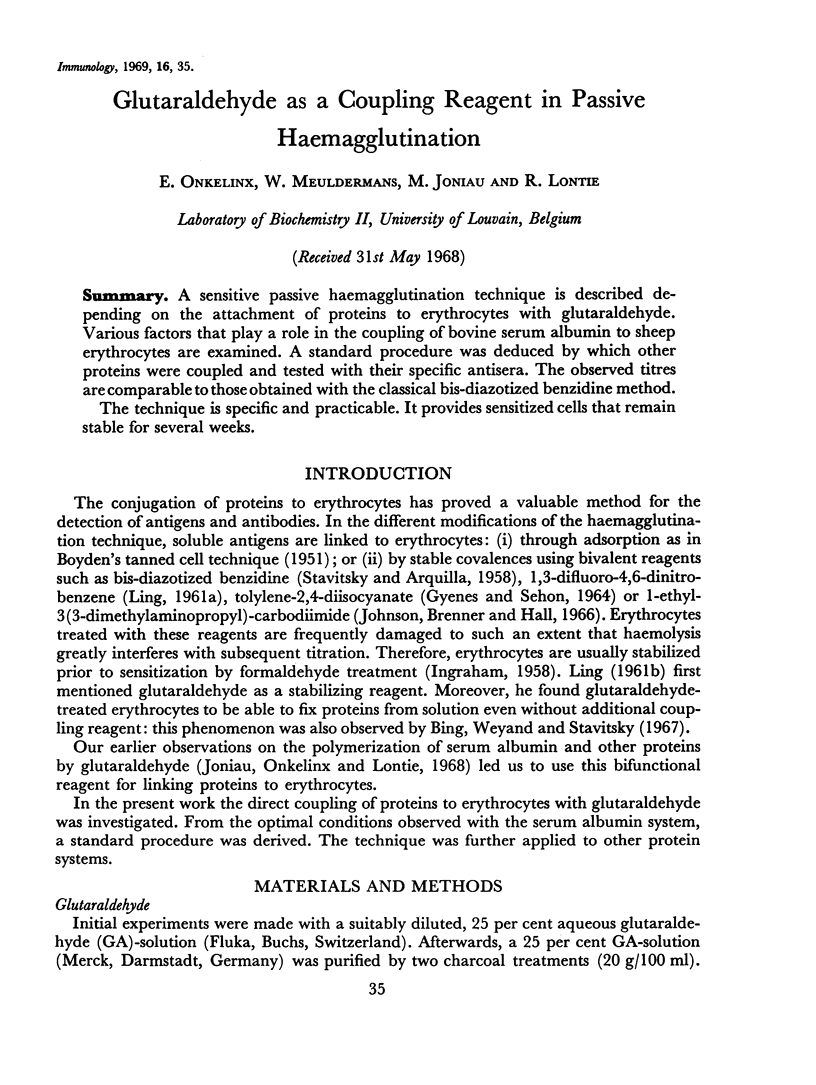
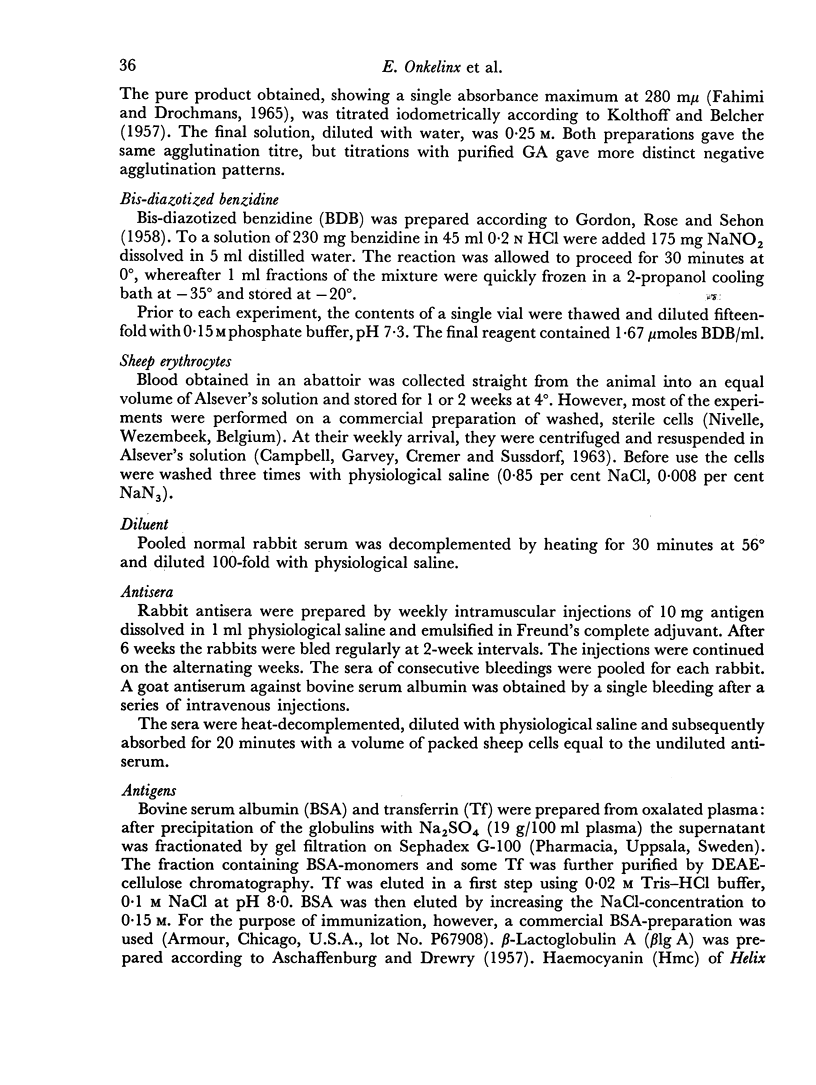
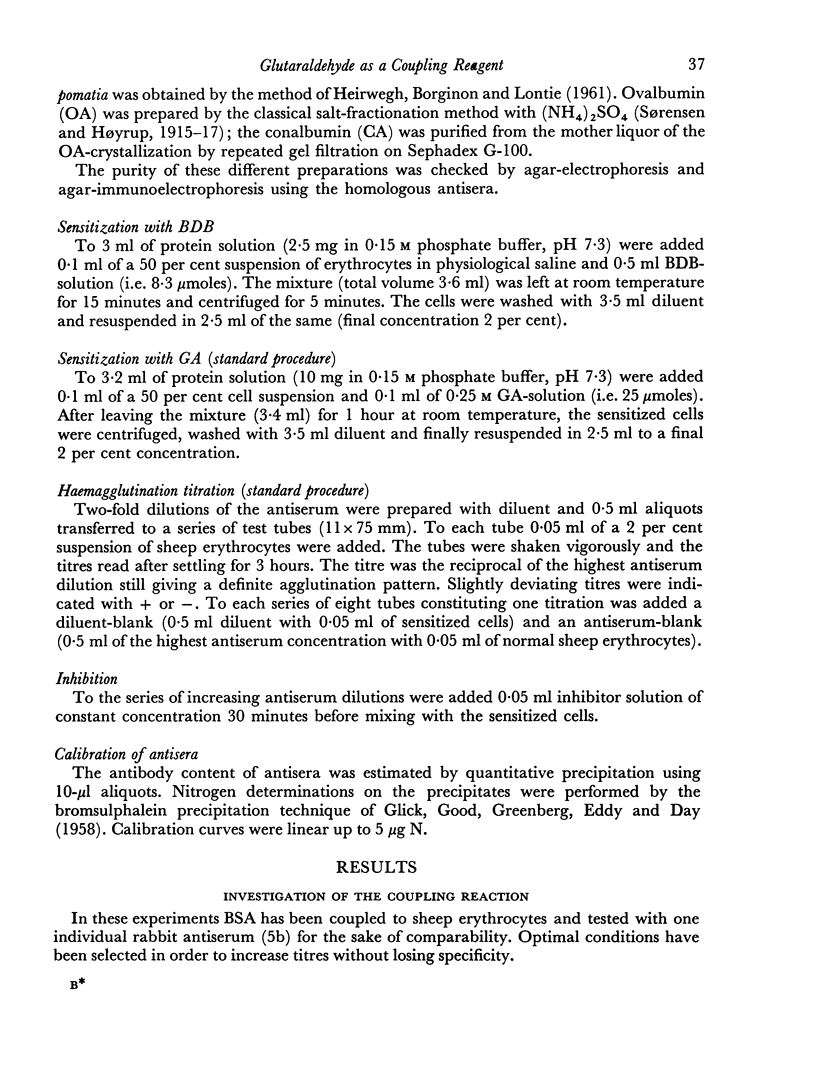
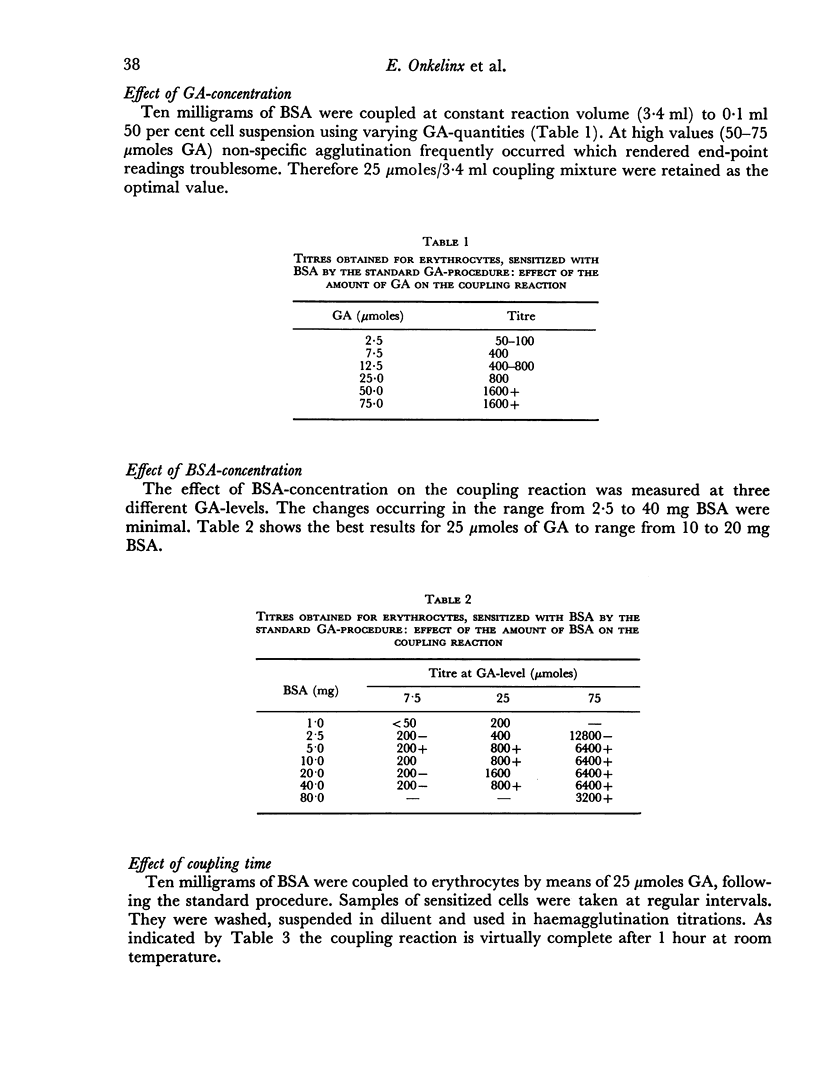
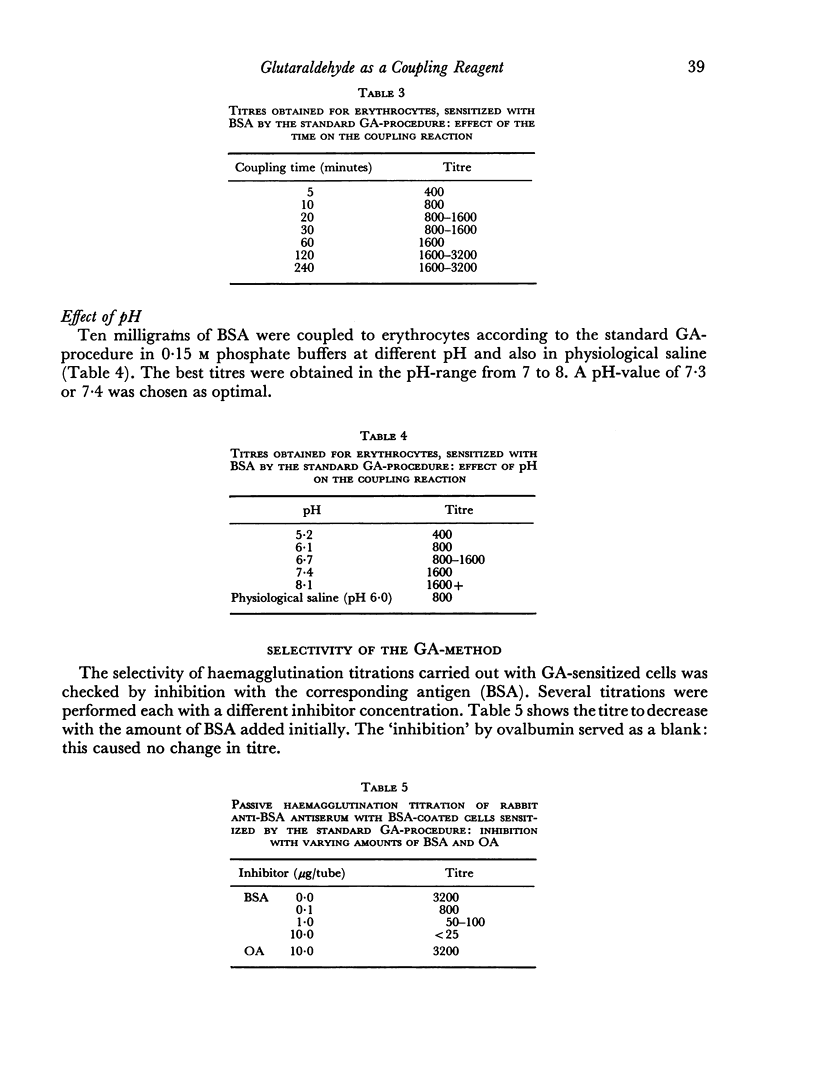
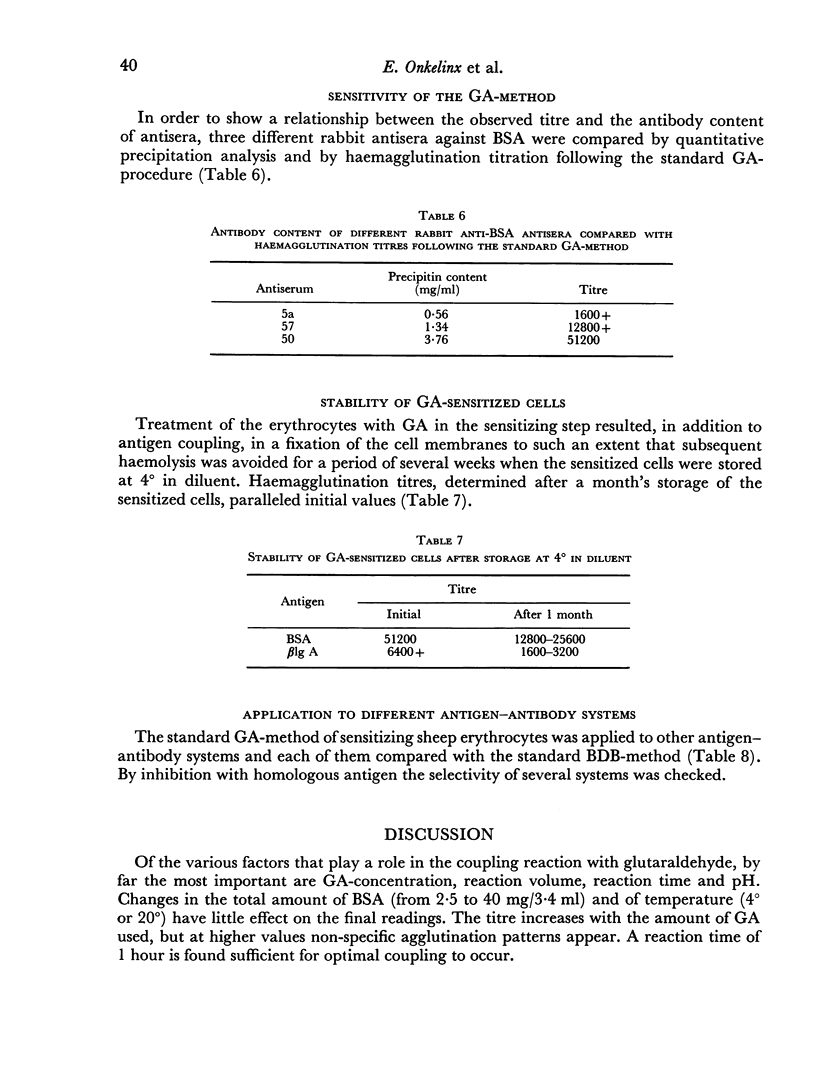
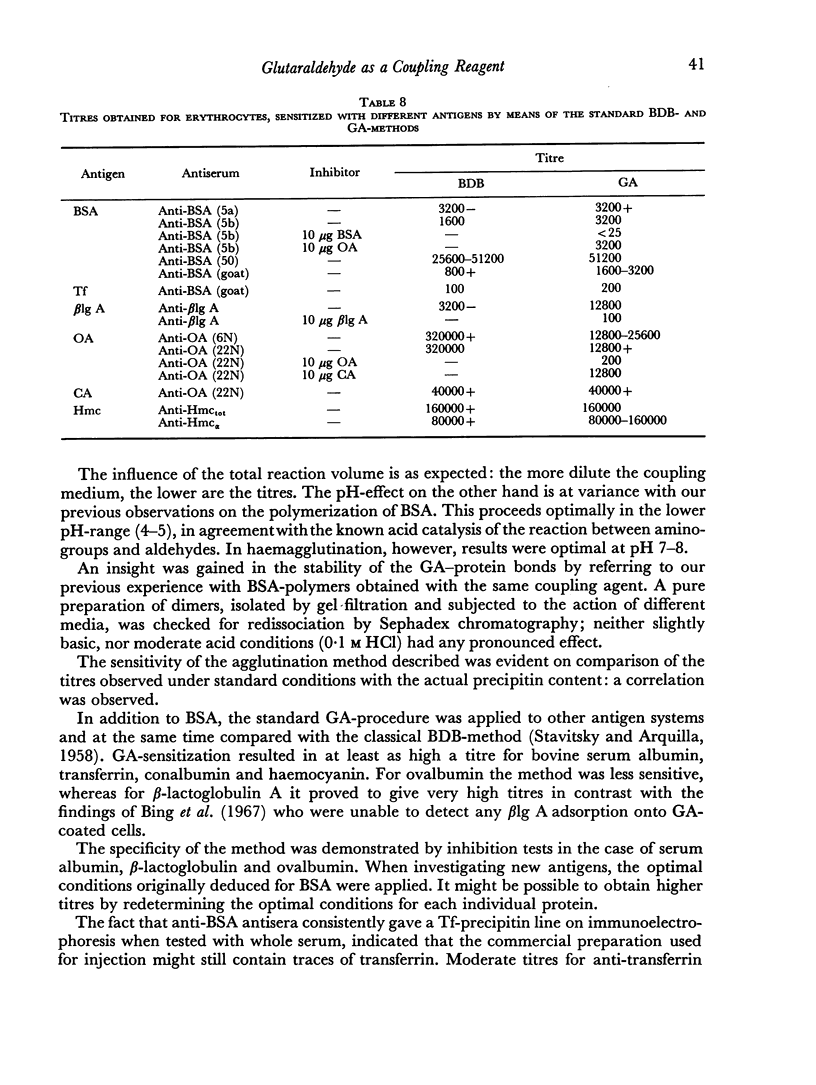
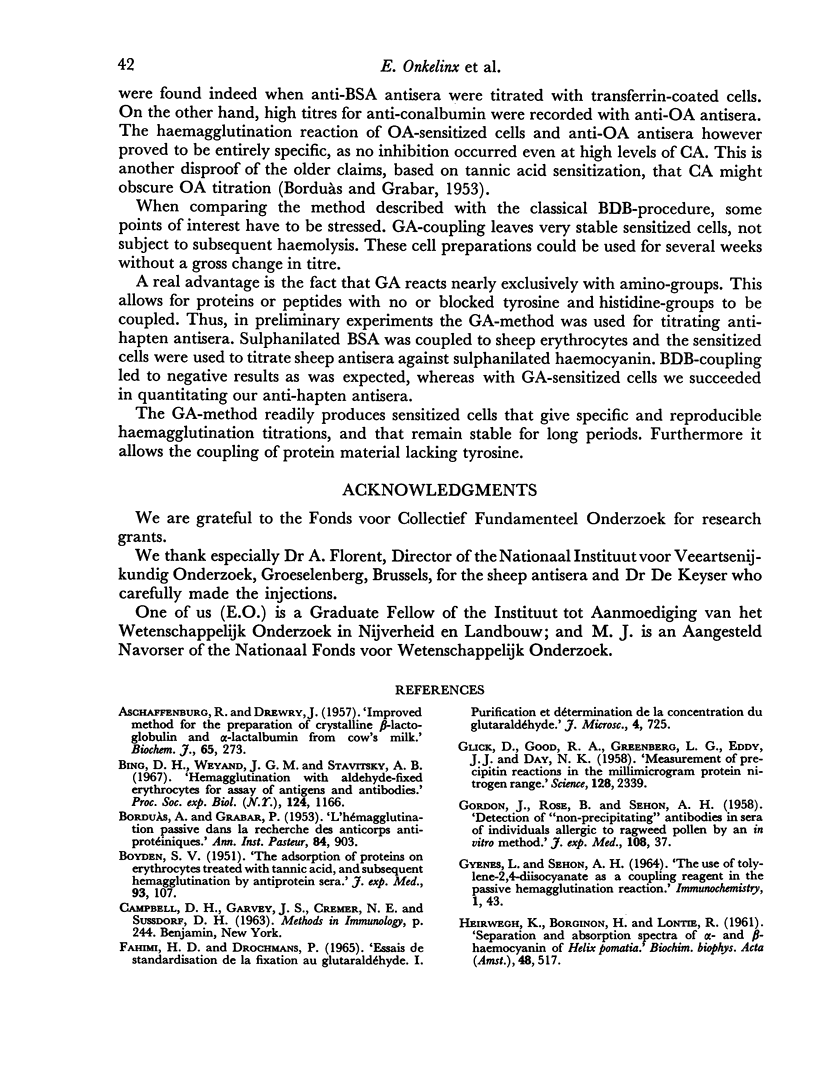
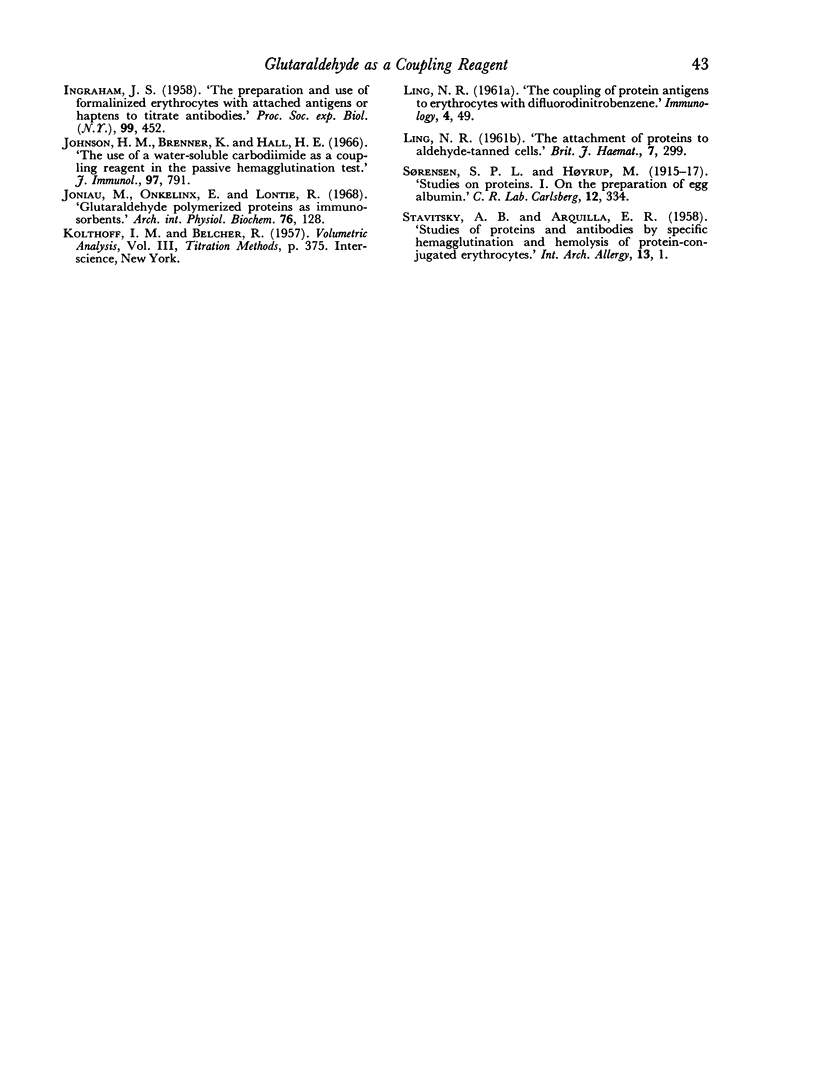
Selected References
These references are in PubMed. This may not be the complete list of references from this article.
- ASCHAFFENBURG R., DREWRY J. Improved method for the preparation of crystalline beta-lactoglobulin and alpha-lactalbumin from cow's milk. Biochem J. 1957 Feb;65(2):273–277. doi: 10.1042/bj0650273. [DOI] [PMC free article] [PubMed] [Google Scholar]
- BORDUAS A. G., GRABAR P. L'hemagglutination passive dans la recherche des anticorps antiprotéiques. Ann Inst Pasteur (Paris) 1953 May;84(5):903–923. [PubMed] [Google Scholar]
- BOYDEN S. V. The adsorption of proteins on erythrocytes treated with tannic acid and subsequent hemagglutination by antiprotein sera. J Exp Med. 1951 Feb;93(2):107–120. doi: 10.1084/jem.93.2.107. [DOI] [PMC free article] [PubMed] [Google Scholar]
- Bing D. H., Weyand J. G., Stavitsky A. B. Hemagglutination with aldehyde-fixed erythrocytes for assay of antigens and antibodies. Proc Soc Exp Biol Med. 1967 Apr;124(4):1166–1170. doi: 10.3181/00379727-124-31953. [DOI] [PubMed] [Google Scholar]
- GORDON J., ROSE B., SEHON A. H. Detection of non-precipitating antibodies in sera of individuals allergic to ragweed pollen by an in vitro method. J Exp Med. 1958 Jul 1;108(1):37–51. doi: 10.1084/jem.108.1.37. [DOI] [PMC free article] [PubMed] [Google Scholar]
- GYENES L., SEHON A. H. THE USE OF TOLYLENE-2,4-DIISOCYANATE AS A COUPLING REAGENT IN THE PASSIVE HEMAGGLUTINATION REACTION. Immunochemistry. 1964 Apr;1:43–48. doi: 10.1016/0019-2791(64)90055-2. [DOI] [PubMed] [Google Scholar]
- HEIRWEGH K., BORGINON H., LONTIE R. Separation and absorption spectra of alpha- and beta-haemocyanin of Helix pomatia. Biochim Biophys Acta. 1961 Apr 15;48:517–526. doi: 10.1016/0006-3002(61)90049-x. [DOI] [PubMed] [Google Scholar]
- INGRAHAM J. S. The preparation and use of formalinized erythrocytes with attached antigens or haptens to titrate antibodies. Proc Soc Exp Biol Med. 1958 Nov;99(2):452–456. doi: 10.3181/00379727-99-24381. [DOI] [PubMed] [Google Scholar]
- Johnson H. M., Brenner K., Hall H. E. The use of a wate-soluble carbodiimide as a coupling reagent in the passive hemagglutination test. J Immunol. 1966 Dec;97(6):791–796. [PubMed] [Google Scholar]
- LING N. R. The attachment of proteins to aldehyde-tanned cells. Br J Haematol. 1961 Jul;7:299–302. doi: 10.1111/j.1365-2141.1961.tb00340.x. [DOI] [PubMed] [Google Scholar]
- STAVITSKY A. B., ARQUILLA E. R. Studies of proteins and antibodies by specific hemagglutination and hemolysis of proteinconjugated erythrocytes. Int Arch Allergy Appl Immunol. 1958;13(1-2):1–38. doi: 10.1159/000228473. [DOI] [PubMed] [Google Scholar]


